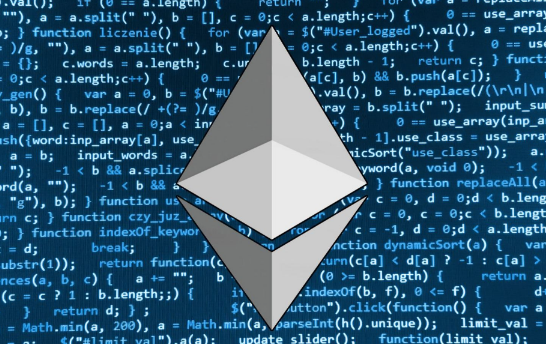|
|
Okay, the user just wrote "Hivemapper" as a query. Hmm, that's pretty minimal—just a single word. They probably want a quick overview or key facts about it.
First, I should confirm what Hivemapper actually is. From what I recall, it's a decentralized mapping project using dashcams, but I should double-check the details to avoid outdated info. The user might be a crypto enthusiast, a tech curious person, or maybe even someone considering participating. Since they didn't specify, I'll assume they need a balanced, neutral explanation.
Breaking it down: The core idea is crowdsourced street-level imagery via dashcams. That's innovative but also raises privacy questions. I should highlight both the tech (blockchain, tokenomics) and the controversies (privacy concerns, legal issues).
The user didn't ask for opinions, but they might wonder if it's legit or a scam. I'll stick to facts but subtly address skepticism by mentioning lawsuits and regulatory scrutiny. No fluff—just clear sections: what it is, how it works, why it matters, and the risks.
Oh, and the token! HMT is crucial here. People often care about crypto projects for investment potential. I'll explain its utility without financial advice—just "used for rewards and network access."
Should I mention competitors? Probably not unless asked. Focus on Hivemapper's unique angle: the hardware (dashcam) + crypto incentive model.
Finally, wrap with a concise summary. If they want deeper dives (like tokenomics or tech specs), they can ask follow-ups. Keeping it scannable but thorough.
Hivemapper is a decentralized, blockchain-powered mapping network that aims to create a real-time, high-resolution map of the world using data collected from dashcams installed in vehicles (cars, scooters, trucks, etc.). Here's a breakdown of its key aspects:
1. Core Concept
Crowdsourced Mapping: Instead of relying solely on centralized entities like Google Maps or HERE, Hivemapper leverages dashcam footage from everyday drivers to build and update maps.
Decentralization: Built on the Solana blockchain, it aims to create a transparent, community-owned mapping network where contributors are rewarded for their data.
2. How It Works
Hardware: Users install Hivemapper dashcams (or compatible devices) in their vehicles.
Data Collection: The dashcam captures geotagged video and LiDAR data (if equipped) while driving.
Data Processing: Footage is uploaded to the Hivemapper network. AI processes the data to extract map features (roads, signs, buildings, etc.).
Rewards: Contributors earn HMT tokens (Hivemapper's cryptocurrency) for valid data submissions. Token rewards are distributed based on data quality and geographic demand.
3. Key Features
Real-Time Updates: Maps update continuously as more vehicles drive, capturing changes like new roads or construction.
High-Resolution Imagery: Provides street-level visual data, useful for navigation, AR, and autonomous vehicles.
Open Data: The network aims to make map data freely accessible to developers, researchers, and the public.
Privacy by Design: Dashcams can blur faces/license plates automatically, and users control data sharing.
4. Tokenomics (HMT)
Utility: HMT tokens are used to:
Reward data contributors.
Purchase map data/services.
Govern the network (e.g., voting on protocol upgrades).

Distribution: Tokens are allocated to contributors, investors, and the ecosystem, with a portion for community rewards.
5. Use Cases
Navigation: Enhanced real-time maps for apps like Waze or Google Maps.
Autonomous Vehicles: Training data for self-driving cars.
Urban Planning: Analyzing traffic patterns and infrastructure needs.
AR/VR: Geospatial data for augmented reality experiences.
Data Monetization: Developers can access the dataset for commercial applications.
6. Challenges & Controversies
Privacy Concerns: Mass collection of street-level footage raises data privacy issues despite blurring measures.
Regulatory Risks: Compliance with GDPR, CCPA, and other data-protection laws.
Competition: Competing with established players like Google, Apple, and TomTom.
Token Volatility: HMT's value fluctuates, affecting contributor incentives.
Legal Issues: Hivemapper faced lawsuits (e.g., from Uber/Lyft drivers) over data collection without explicit consent.
7. Current Status
Hardware: Hivemapper dashcams are available for purchase (~$600), but any compatible dashcam can participate.
Network Growth: Over 10,000 active contributors as of 2024, primarily in the U.S. and Europe.
Partnerships: Collaborations with companies like Mapbox and autonomous vehicle firms.
8. Why It Matters
Hivemapper represents a shift toward decentralized infrastructure, challenging Big Tech's dominance in mapping. It empowers individuals to monetize their data while building a public good. However, its success hinges on solving privacy, scalability, and regulatory challenges.
In Summary
Hivemapper is an ambitious project merging crowdsourcing, blockchain, and AI to create a real-time, community-owned map. While it offers innovative solutions for data ownership and transparency, it navigates complex ethical and legal landscapes. Its long-term impact will depend on adoption, regulatory clarity, and the ability to balance innovation with privacy.
Hivemapper 是一款由微软推出的应用程序,旨在帮助用户通过手机摄像头实时捕捉周围环境,并将这些图像与地理位置信息相结合,生成详细的室内和室外地图。这款应用利用计算机视觉和深度学习技术,能够自动识别并标注图像中的各种物体和场景,为用户提供丰富的信息参考。
Hivemapper 的主要特点包括:
实时地图生成:用户可以通过手机摄像头实时捕捉周围环境,应用会自动生成详细的室内和室外地图。
自动识别与标注:应用利用计算机视觉和深度学习技术,能够自动识别并标注图像中的各种物体和场景,如建筑物、道路、植被等。
地理位置信息结合:将生成的地图与地理位置信息相结合,为用户提供更准确的导航和定位服务。
多平台支持:Hivemapper 支持多种操作系统,包括 iOS、Android 和 Windows。
社区共享:用户可以将生成的地图与地理位置信息分享给其他用户,共同完善地图数据。
商业应用:Hivemapper 的技术可以被广泛应用于商业领域,如房地产、城市规划、旅游等。
目前,Hivemapper 已经在全球范围内得到了广泛应用,为用户提供了一种全新的地图服务体验。
|
|